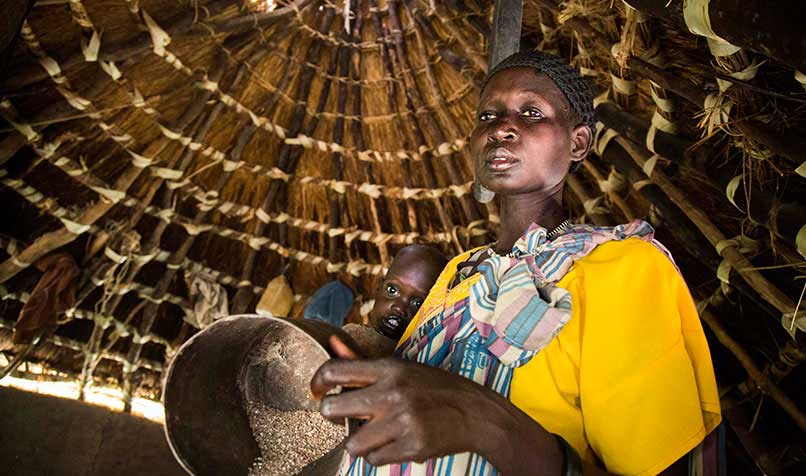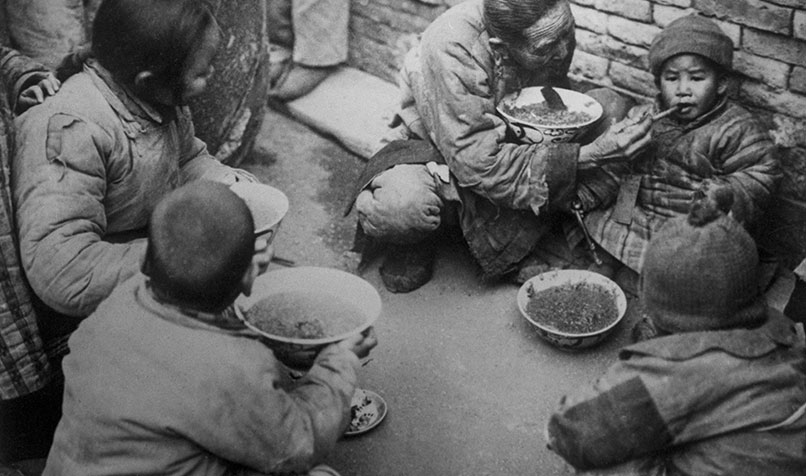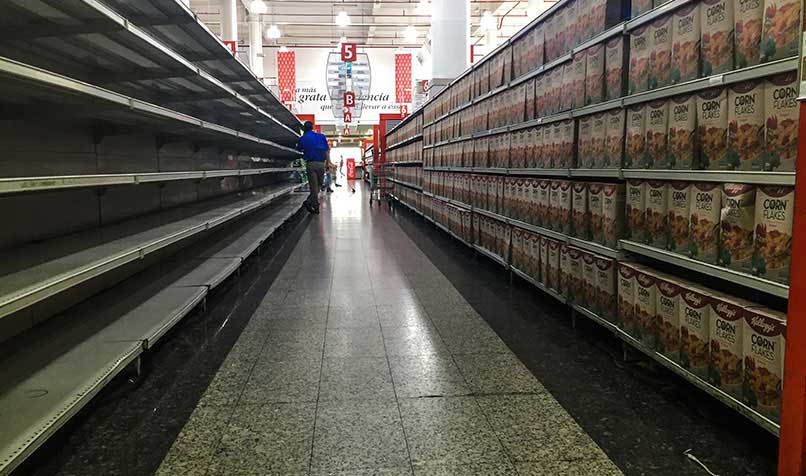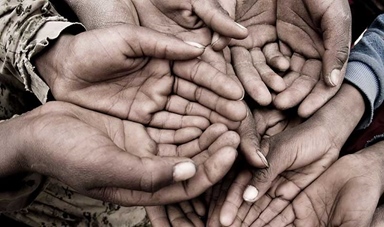Loading component...
At a glance
By Stephen Corby
Climate change. Nuclear proliferation. Terrorism. The worries of the world are a lot to stomach, but we could be missing the most glaring one.
As the size of the global population continues to grow at an exponential rate, and our agricultural resources are finite, just what are we all going to eat?
Alison Martin, group risk officer at Zurich Insurance in Switzerland, says we need to be taking global food security more seriously, as a potential food shortage crisis looms in the decades to come, if not sooner.
Could we run out, or run suddenly short, of food? And what would happen if we did? Martin, who delves deeply into the numbers and risk probabilities of catastrophic food shortages every working day, says food security poses a greater threat to humanity than the hurricanes, heatwaves, droughts and wildfires that generate most of the publicity around global warming.
“It’s a difficult thing to make discussion of food security relevant to individuals, because we can’t look to history to get a predictor of what will happen in the future,” she explains.
“But if you look at the droughts and famines we’ve seen in Africa, and the risk factors that were identified in the World Economic Forum’s January 2018 Global Risks Report, we’re talking about the potential failure of crops in America and China.
“There’s a one-in-20 chance that a major weather event could make that happen, and that would wipe out the production of essentially 75 per cent of the world’s maize, overnight.
“It would be like the African famines on steroids, on a scale we’ve never seen, basically. But if people don’t see these things happening, it’s out of sight, out of mind, while the terrible events that we do see happening are front of mind.
“We don’t want an ecological Armageddon to happen to raise awareness, but we do need to instil concern about this issue, because it’s better to be prepared now, rather than waiting for a major crop to fail.”
Reality bites: we're reliant on too few foods

Maize, of course, is both an important livestock feed and an ingredient in cornstarch, which is used in all kinds of industrialised food products, as well as a major source of cooking oil. It’s hard to overstate the kind of panic the loss of its production would cause.
Martin says what’s scary about the situation is that the dangers are magnified by the fact that we are all reliant on such a small number of foods, partly due to dietary global homogenisation, which is driven by the intensity of modern farming methods.
“There are a number of consequences as it creates a vicious circle – those intense methods become so economically efficient that they produce the cheapest forms of sustenance, which become the ones that most people turn to, so the exposure we have is greater because there is less diversity,” an increasingly exasperated Martin explains.
“We’re reliant on such a small number of foods – only 12 plant species and five animal species produce three-quarters of all our food, globally.
“There’s less and less diversity in our diet, and that’s creating a loss of biodiversity as habitats are lost, because a lot of land is being taken away to be used for the intense production of things like meat.
“I think one of the really interesting things in that Global Risks Report is that it talks about the interconnectedness of risk, and the fact that it doesn’t take too many shocks for the whole system to be affected.
“Suddenly, you’re looking at things like mass migration, the economic effects, and social inequalities. It can really reach some scary proportions.”
Too many mouths to feed

One country that has experienced food shortages in the past, and is concerned about preparing for the future, is China, with its population of 1.4 billion.
China experienced numerous food shortages in the first half of the last century, but managed to fix them by instigating quota systems and land reform, which incentivised farmers to produce more food.
The country’s grain output increased by a barely believable 77 per cent from 1982 (354 million tonnes) to 2017 (618 million tonnes), outpacing its population growth.
Still, China is trying to feed 20 per cent of the global population using just 7 per cent of the world’s farmlands; a challenge that has seen farmers rely heavily on chemical fertilisers and other pollutants, which has been detrimental to the country’s environment.
Australia, by comparison, is a “food abundant country”, according to Michael Battaglia, research director at the CSIRO’s Agriculture and Global Change unit, and a local expert on food security.
"Despite all the technological advances of the past 1000 years, human civilisation still relies on agriculture, and as soon as you run short of food, you face civil unrest.”
“As a country, we produce enough food to feed 60 million people,” Battaglia says. “We export 3 per cent of globally traded food and yet we make up just 1 per cent of the global population, so that’s where the excess comes from.”
However, Australia will face challenges by 2050, with the population expected to reach 40 million and various climate change issues, he adds. The bigger worry is that other countries might start looking enviously at (Australia’s) excess production.
“Food security is the bigger issue, because by 2050 the estimate is that, globally, we will need to produce around 70 per cent more food than we do currently to accommodate both population rises and changes in dietary preferences, and business as usual won’t get us there,” Battaglia says.
“There’s a strong correlation between food security and political stability, and if there is an increase in food shortages, you could very rapidly see political instability. And that is one of the most significant issues that we face with food shortages and climate change – it’s how it plays out in terms of geopolitics.
“Despite all the technological advances of the past 1000 years, human civilisation still relies on agriculture, and as soon as you run short of food, you’ll face civil unrest.”
Weathering the storm of climate change
One of the most significant risk factors for any country, Martin maintains, is severe storm activity and floods. She says that in the context of climate change, both are the biggest drivers of cost to humanity, adversely impacting around 250 million people every year. Scarily, that number is rising.
Martin tends to use the word “scary” a lot when talking about predictions, but she leans on the word particularly heavily when discussing the models she’s seen for perils such as rising sea levels.
“We deal with uncertainty, working in risk, so it doesn’t deter us from making predictions when the people who work in these fields can’t agree, but if you look at catastrophe modelling and storm events and things like extreme hail events that can also hit crops, the [sophistication of] modelling is getting better, and each season gives us new insights,” she says.
“We use the modelling and if we see it’s more likely that an area will suffer an event, then we can look at things like planting alternative crops or farming in areas that are less risky than low-lying flood plains.”
Food insecurity: preparing for the worst

Of course, the ultimate question Martin and many others ponder is: what can be done? Martin says the key is to plan for possible catastrophes by building in resilience, so that if disasters occur, food supplies won't fall apart.
“Insurance can help building resilience into the system and we can do that by having less of an environmental footprint and by investing in other crops and food sources to give us protection in the event that something does happen,” she says.
“Governments can also help by providing subsidies for different crops and helping farming communities to look at the relative value of farming different things.
“What we’re talking about is risk management, and you manage [risk] by making people more aware, through education, the media, food labelling and transparency, and providing more choice in the food we’re consuming, so consumers can make informed decisions and be aware of the risks to themselves and to society.”
Far more than any media coverage, however, insurers can alert consumers to a potentially problematic issue by tweaking premiums and explaining exactly why they’re doing so. Few things get people’s attention like a sharp pain in the hip pocket.
“Because risk is our business, if we start to adjust premiums based on these factors people will take a lot more notice,” Martin insists.
“It’s a simple analogy, but if you’re a homeowner and your insurance goes up because flood risk has changed in your area, that’s very direct and relatable, so you might think, ‘Okay, how can I help to reduce the risk so premiums can go back down?’ Once people can feel and see the risk in the form of the premiums they pay, it can facilitate better risk awareness and risk mitigation.”
Sounding the alarm on food security
For her part, Martin feels compelled to educate people about the very existence of food security concerns, because she knows how much it will affect future generations.
“It does worry me and, as a parent with two toddlers, I find it very sad that so many people seem to be oblivious to the things that will impact the lives of our children, and their children, or simply don’t want to [confront] the truth and the reality we are all facing,” she says.
“I do wonder [about] how can I make sure my children understand the risks they’re exposed to, not only here and now but in the future, and how to balance that.
“My bigger concern is that, as a society, we are spending all our time educating people on the very real, urgent things we’re facing now. But what about the things that are going to impact us in 20, 30, or 40 years’ time? If we don’t talk about them now, we will have no ability to do something about them when they arrive. By then it will be too late.”

